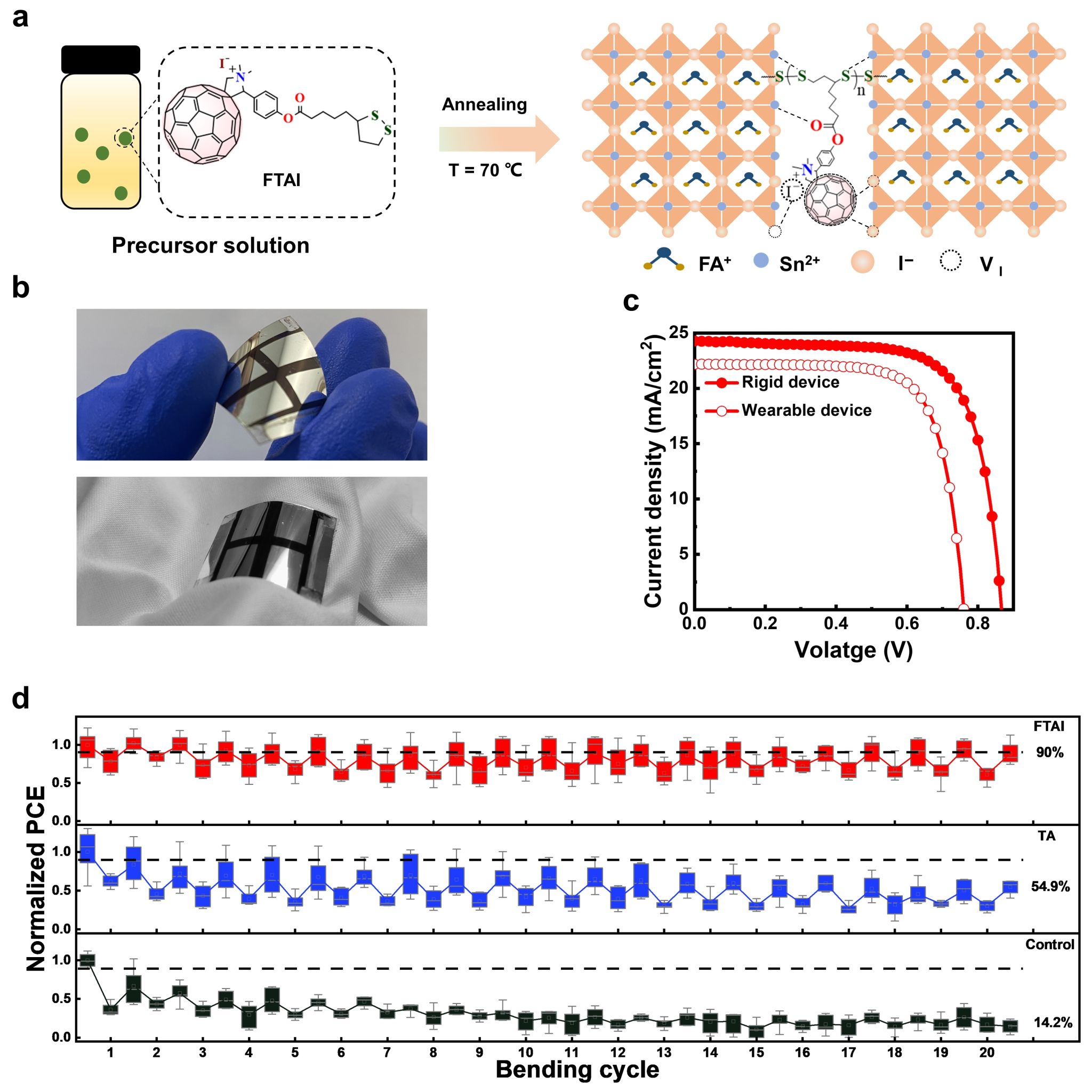Recently, Associate Prof. Tian Chengbo and Prof. Wei Zhanhua from the Institute of Luminescent Materials and Information Displays and the College of Materials Science & Engineering of Huaqiao University (HQU), published their latest research paper titled “Cross-linkable fullerene enables elastic and conductive grain boundaries for efficient and wearable tin-based perovskite solar cells” in Angewandte Chemie International Edition, one of the prime chemistry journals published by John Wiley and Sons Ltd. since 1962, with the latest impact factor of 16.823.
Tin-based perovskite solar cells (TPSCs) have been widely studied due to their low toxicity and excellent photoelectric performance. However, the tin-based perovskites prepared by solution method can lead to high defect density in the film and great residual stress, seriously weakening the performance of the corresponding devices, especially that of the flexible wearable ones. To improve the performance of tin-based perovskites as wearable devices, the team led by Associate Prof. Tian Chengbo and Prof. Wei Zhanhua synthesized and created a cross-linkable fullerene, thioctic acid functionalized C60 fulleropyrrolidinium iodide (FTAI) based on its prior research findings (Nat. Photon. 2024, DOI: 10.1038/s41566-024-01381-7; J. Am. Chem. Soc. 2024, 146, 2494; Adv. Mater. 2023, 25, 2205603). The proposed new fullerene can help regulating perovskite crystallization, which will reduce its internal deficiencies and unleash the residual stress in the film through the cross-linkable fullerene, thus giving the film excellent bending resistance. The research results show that the FTAI-based rigid device and flexible device respectively exhibited a high-power conversion efficiency of 14.91% and 12.35%. Surprisingly, the flexible perovskite solar cells retain about 90% of the initial efficiency after 10,000 bending times, demonstrating their huge potential applications as wearable devices.

HQU’s graduate students Hou Enlong and Luo Jiefeng and doctoral student Chen Jingfu co-first authored the paper, with Associate Prof. Tian Chengbo and Prof. Wei Zhanhua as corresponding authors and HQU as the corresponding affiliation. The research was sponsored by the National Natural Science Foundation of China, the Natural Science Foundation of Fujian Province and the Research Foundation of Huaqiao University.
Link to the paper: https://doi.org/10.1002/anie.202402775
(Editor: Wei Linying)
 0086-595-22693961 0086-592-6160091
0086-595-22693961 0086-592-6160091 fao@hqu.edu.cn Contact Us | Site Map
Undergraduate Admission
fao@hqu.edu.cn Contact Us | Site Map
Undergraduate Admission  0086-595-22695678
0086-595-22695678  hqdxjwzs@sina.com
Graduate Admission
hqdxjwzs@sina.com
Graduate Admission  0086-592-6161272
0086-592-6161272  hqugraduates@163.com
Contact Us
|
Site Map
hqugraduates@163.com
Contact Us
|
Site Map